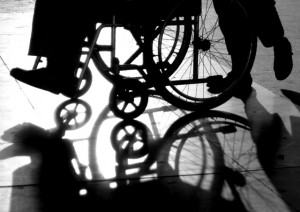 Henrietta is an 87-year-old San Mateo County woman, who receives both Medicare and Medi-Cal benefits. Like many other people who are dually eligible for both programs, she has numerous chronic health conditions, including diabetes, congestive heart failure, chronic lung disease (COPD), peripheral vascular disease, and coronary artery disease.
Henrietta is an 87-year-old San Mateo County woman, who receives both Medicare and Medi-Cal benefits. Like many other people who are dually eligible for both programs, she has numerous chronic health conditions, including diabetes, congestive heart failure, chronic lung disease (COPD), peripheral vascular disease, and coronary artery disease.
Recently, Henrietta’s family had to take a hard look at whether she could safely continue to live at home. (Henrietta is not the woman’s real name.)
Over the course of eight months, Henrietta was hospitalized five times – each time usually after a trip to the emergency room. Her primary care doctor felt overwhelmed trying to manage her complex illnesses alone, and she was at-risk of nursing home placement.
Henrietta receives her services through the Health Plan of San Mateo, a county operated health system that runs managed care programs for Medicare and Medi-Cal. After the many hospitalizations, her doctor suggested she enroll in the health plan’s special program that provides interdisciplinary care management.
Through the program, Henrietta was assigned a social worker and a nurse practitioner who was also her case manager. Her case manager made home visits and weekly calls to check on her. She worked closely with Henrietta’s daughter, who was her In-Home Services and Supports (IHSS) worker, to learn more about Henrietta’s situation and needs.
This helped her care team identify two non-medical issues that proved critical to helping Henrietta stay out of the hospital.
Henrietta’s house had stairs between almost every room, and she couldn’t manage the stairs with her walker anymore. She had a manual wheelchair, but she couldn’t propel it herself. She dragged herself from room to room, hanging onto walls. Because of this, she had frequent falls, some of which led to emergency hospital visits. Her care team suggested that relatives build ramps inside the house, and they helped Henrietta get an electric wheelchair.
The care managers also noted that Henrietta frequently shared bags of salty potato chips with her grandsons. They gave the whole family nutrition education about the link between Henrietta’s salt intake and spikes in her blood pressure that frequently sent her to the emergency department. Potato chips are no longer a household food staple.
Now, when the issue of living in a nursing home comes up, Henrietta remains emphatic that the only home she will live in is her own. Because of the team effort including her doctor, family members, and care coordinators, Henrietta is staying out of the hospital and continues to live in her own home.

I complete understand what you are saying, but in this whole process you are trying to eliminate the importance of doctor.. The things which the patient needed could have easily be provided by home health, .
Once the patient is sick and the HMO doctor is not avaiable to see her, and she is shuttling between ER, different doctors,waiting rooms and waiting for HMO approvals for surgery, then they would understand medical necessity. Why are we mixing medical need with social needs.
I totally agree Bina’s response. Had the patient been receiving home health services I am positive most of the hospitalizations would have been avoided.
She needs to go to short term rehab, go to the nursing home for 2-3 weeks so she can regain her strength with physical therapy, occupational therapy which will benefit her lung and heart condition great time. She also can get monitor by the nurses to make sure all her medication working well too. She then be discharged home from nursing home, follow up with home health nurses and physical therapy not only provide more nursing teaching: sign and symptom to call MD, right diet,…. but also can recommend safety measure at home.
I don’t recommend long term stay at nursing home but people stayed at nursing home short term before going home usually much more stronger and return back to independent level much faster than going home straightly from the hospital.
I also think government should increase hour for IHSS program or paying for board and care to help those who can’t manage their care by themselves. Patient will be care for in a smaller environment which have lower ratio of nurses: patient care and much cheaper than staying long term in the nursing home. However, the care giver at the board and care need to be certified and monitored strictly too.
Her needs are directly and completely addressed by PACE. She continues to stay at home; She gets IHSS; She has a dedicated PCP and specialists; The PACE IDT is also a team that manages her care. And since PACE deals only with the frail they could be more efficient than a HMO.